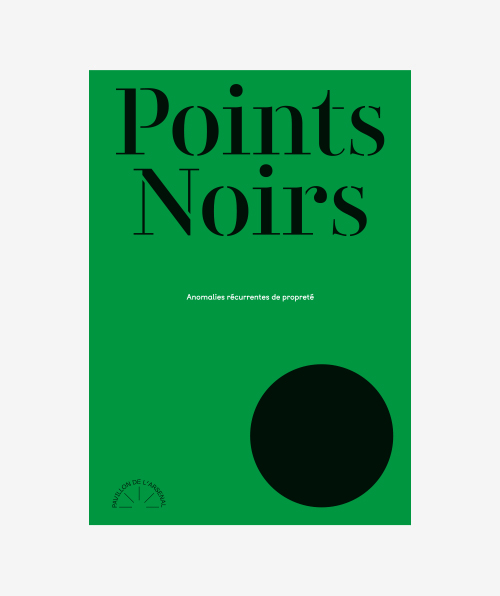This unprecedented research makes it possible to list and classify 1412 "black spots" spread over all the arrondissements of Paris. They reflect both daily misuse and reveal micro-spaces: in this publication launched in March 2023 and presented during a meeting at the Pavillon de l'Arsenal, Milena Charbit, Déborah Feldman and Baptiste Potier from 127af agency propose a new Parisian cartography through the eyes of those who criss-cross the city on a daily basis in order to reveal these "crumbs of land" and to define their potential for evolution.
“Garbage collectors draw and map the city just as urban planners and architects do, conducting what is called ‘black spot mapping’. More formally known in France as ‘recurring irregularities in cleanliness’, these ‘black spots’ are are places where illegal littering is happening on a daily basis. These places have particular architectural properties: they are dead ends, recesses, interstices, salient angles, and other indeterminate ‘leftovers of land’. The experience of garbage collectors, who tirelessly roam the city, following the same streets day after day until they knows every nook and cranny by heart, allows us to understand the city from beneath. In other words, by following their approach, we end up perceiving all kinds of urban crevices and irregularities.
As part of the FAIRE call for projects, we wish to assemble a guide to these recurring anomalies by going to each of the spots that have previously been identified by the garbage collectors, and draw precise plans and elevations, then recording their stories and compiling their uses through the testimony of the garbage collectors, ultimately establishing a classification, a diagnosis of these spaces that are currently undetermined. ‘Crumbs of land’ will thus be revealed by this new mapping through the lens of waste and the eyes of those who roam the city on a daily basis.
In tandem with the preparation of the guide, our research will allow us to select a certain number of particularly remarkable micro-plots for which we will conduct a property search, though it seems that most of them belong to the City of Paris. The plots could be then sold off or concessioned in order to for microarchitectures that address direct needs of the neighbourhood in which they are located to be inserted.”
POINTS NOIRS - ANOMALIES RÉCURRENTES DE PROPRETÉ
Publication of study, march 2023

POINTS NOIRS - ANOMALIES RÉCURRENTES DE PROPRETÉ
Pavillon de l'Arsenal Editions, march 2023
Graphic design : Noémie Santos, Antoine Lemarchand
32 € / 17,5 x 25 cm / 352 pages
In French only
PROJECT PARTICIPANTS
Milena Charbit, architect
Olivier Charlec, waste collector
127af, architecture and design studio



